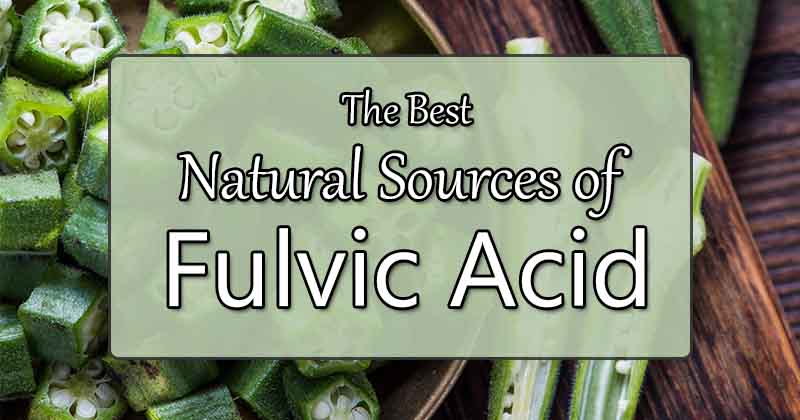When microorganisms break down plant matter, it creates fulvic acid – a complex chemical compound with many health benefits. While there are plenty of fulvic acid supplements you can get, there are also lots of natural sources of fulvic acid.
Here are the best ones and what you need to know about them.
1. Organic Produce from Small Farms
Fulvic acid is naturally found in soil. Plants absorb the fulvic acid nutrients from the soil as they grow. So, you should be able to meet your nutrient requirements simply by eating lots of fruits and veggies.
The problem is that most food is grown in nutrient-depleted soil, mostly due to intensive and mono-crop farming practices. As a result, the food we eat today has fewer nutrients in it and farmers have to add chemical fertilizers.
If you can afford it and have access, choose produce which is grown with sustainable practices. This usually means organic produce from small farms. Small farms can also have depleted soil though, so your best bet is to grow your own food. Even better, forage wild greens like stinging nettles or (my favorite) hogweed.
2. Plants with Deep Roots
While all plants will have some amount of fulvic acid in them (especially if grown in good-quality soil), plants with deep roots will have more. This is because fulvic acid is mostly found in the subsoil and not the top layer.
Some of these plants include:
- Turnips
- Sweet potatoes
- Pumpkins and winter squash
- Peppers
- Tomatoes
- Melons
- Okra
- Asparagus
- Horseradish
- Lima beans
- Artichokes
- Burdock root
It is not clear whether the roots of plants will have more fulvic acid than the aboveground parts of the plant. For example, there isn’t any information available (that I could find, at least) as to whether turnip roots will have more fulvic acid than turnip greens. So long as you are eating a variety of fruits and veggies – including ones with deep root systems — I wouldn’t worry about this.
3. Blackstrap Molasses
Blackstrap molasses is made from sugarcane, a plant which has very deep roots. The boiling process used to make molasses will likely destroy heat-sensitive antioxidants in molasses but it concentrates the minerals. As a result, molasses is a great source of fulvic acid minerals.
Note that some molasses is made from beets. You’ll want one like this molasses made from sugarcane.
4. Shilajit
Shilijat is a sticky, tar-like substance which can be found oozing out of rocks on high mountain ranges.
It contains 60-85% humic substances, of which upwards of 20% is fulvic acid. Thus, shilijat is considered the best natural source of fulvic acid.
Read more about what shilajit is here and see the best shilajit supplements here.
5. Water from Springs, Streams and Lakes
Fulvic acid is soluble in water. So, there is actually a high amount of fulvic acid in streams and lakes found in wilderness areas. It is part of the reason behind the “raw water” craze. (Please don’t drink untreated water; there are some seriously nasty and dangerous parasites which live in water – even water from wilderness springs!).
The health supplement industry has jumped on this. Now you can find all sorts of health drinks which supposedly contain fulvic acid. They are often called:
- Fulvic water
- Fulvic and humic water
- Functional beverages
- Black water
While these products might not be complete scams they are definitely gimmicks.
Most just add a tiny bit of shilijat to water and sell it at a really high price. Don’t waste your money on fulvic water.
However, if you regularly go backpacking in the wild, bring a good water filter and enjoy water from the wild streams. The filter will remove nasty bacteria, parasites and algae but allow the smaller fulvic acid nutrients to pass through.
6. Seaweed and Algae
Seawater also contains fulvic acid, which is why seaweed and algae can be very good natural sources of fulvic acid. Because seaweed and algae is high in many nutrients and has other health benefits, this is something you should probably be adding to your diet anyway.
If you don’t like the taste of most seaweeds, try Irish sea moss. It is great for the gut, skin, hair and immunity — and you can even make pudding out of it.


I really need to know a very rough idea of how much fulvic acid in a beetroot, for example. This is so I can know what a capsule with, say, 25mg is equivalent to in terms of a natural source. Also, I have heard that Fulvic Acid can interfere with thyroid treatments such as Thyroxine. And that it is not suitable for autoimmune conditions, and this could include MND (jury still out on that one). Would 25mg perhaps be too small a dose to be a problem in both these cases please?